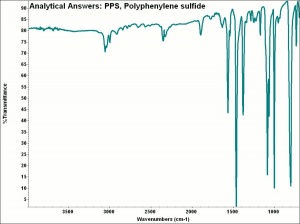Difference between revisions of "Polyphenylene sulfide"
(Undo revision 31233 by Contributions/ ([[User talk:|talk]])) |
m (Text replace - "== Authority ==" to "== Sources Checked for Data in Record ==") |
||
| Line 24: | Line 24: | ||
|} | |} | ||
| − | == | + | == Sources Checked for Data in Record == |
* Website address 1, Website address 1 Comment: Textile World at www.textileworld.com/categories/9905/fibers.html | * Website address 1, Website address 1 Comment: Textile World at www.textileworld.com/categories/9905/fibers.html | ||
Revision as of 14:03, 1 May 2016
Description
A thermoplastic polymer made by the condensation of p-dichlorobenzene and sulfide sodium sulfide. Polyphenylene sulfide, or PPS, will not dissolve in any organic solvent at temperatures under 200 C. PPS is often glass reinforced and made into molded parts for connectors, housings, and pump bodies. It is occasionally used as a fiber in protective clothing, although it is stiff and has a low moisture regain.
Synonyms and Related Terms
PPS; poly p-phenylene sulfide; polyphenylene sulphide (Br.); poli(sulfuro de fenileno) (Esp.); sulfureto de polifenileno (Port.)
Examples: Ryton [Amoco Fabrics & Fibers]; Procon [Toyobo]; Toray PPS [Toray]
Other Properties
Resistant to organic solvents and alkalis. Attacked by oxidizing acids and sodium hypochlorite.Moisture regain = 0.6%; Tenacity = ~3 g/denier; Elongation =25-25%
| Melting Point | 185 |
|---|---|
| Density | 1.38 |
Sources Checked for Data in Record
- Website address 1, Website address 1 Comment: Textile World at www.textileworld.com/categories/9905/fibers.html
- Marjory L. Joseph, Marjory L. Joseph, Introductory Textile Science, Holt, Rinehart and Winston, Fort Worth, TX, 1986
- Theodore J. Reinhart, Theodore J. Reinhart, 'Glossary of Terms', Engineered Plastics, ASM International, 1988
- G.S.Brady, G.S.Brady, Materials Handbook, McGraw-Hill Book Co., New York, 1971 Comment: p. 79
